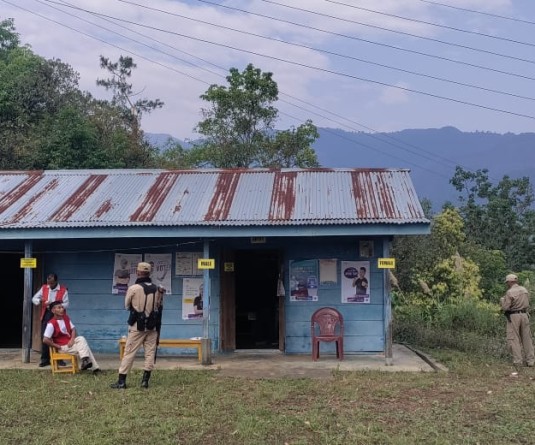
Imlisanen Jamir
Dimapur | February 20
Dimapur | February 20
Ninety two year old Temjenlila Ao squints as she watches blurred images on her television set. Sitting on a stool in her modest living room, she turns away from the screen and looks at a bulky transistor radio atop her dresser. She had bought the radio sometime in the 1970s while working as a nurse in Assam.
“This was our only source of information and entertainment for many years;” Temjenlila recalls her family huddling up daily for the evening news and her children listening to songs on it regularly. “I hardly ever turn it on now,” she says, turning her gaze back to the television.
In a world where television and the internet have revolutionized participation in public debate, the radio is often ignored by the mainstream. However, this device is not completely exhausted yet. Despite the increasing number of internet users, the United Nations Educational Scientific and Cultural Organization (UNESCO) notes that the radio is still a major medium to reach “remote communities and vulnerable peoples.”
Bulky sets have been replaced by mobile phones tuned into radio frequencies and the ubiquity of mobile technology enables even remote communities to interact with radio shows, using a tool already in their possession.
While the radio remains an uncelebrated yet significant medium worldwide, Nagaland State continues to lumber in a mono-dimensional existence, as far as radio waves are concerned.
All India Radio (AIR) Nagaland dominates the frequencies in the State, leaving no other alternative for the ever decreasing number of radio listeners. On their part, AIR acts as a reliable provider of news and broadcasts frequent entertainment and educational programmes.
However, the parastatal aspect of a communication medium, sanctioned and at least partly controlled by the ‘State,’ is a concern for some people. Jacob Yanthan, a teacher from Kohima says, “While the print media in Nagaland has, for the most part, succeeded in becoming independent voices, the radio airwaves are still dominated by the State.” “I’m not suggesting that there is anything Orwellian at play here. But it is unhealthy and it is time for autonomous views to emerge in Nagaland’s radio waves as well,” he asserts.
Spectrum allocation restrictions in “disturbed areas” of India do not help the case either. The World Association of Community Radio Broadcasters, in a 2013 report, noted that “there have been no actual clearances for community radio license applications from certain specific regions of the country.” “This is particularly the case of ‘disturbed areas,’ in spite of the recognized contribution of community radio elsewhere to dialogue and peace building,” the report added.
When UNESCO declared February 13 as World Radio Day, it was done to “. . . promote access to information and freedom of expression. . .” It was also done to recognize the radio’s vital role in boosting the entertainment industry, particularly music.
Temjen Jamir, a musician from Dimapur, views that independent FM radio stations can provide a major boost to the local music scene. “Many Naga musicians can benefit by getting local airtime, thereby reaching more people with their music,” he adds. Jamir feels that the radio can be a major complementary avenue for local musician, given the ever increasing presence of Naga artists on the internet.
The radio acts as a tool to promote industry for some, induces nostalgia in many and appears as hope for a freer and better informed world for others. Fighting for the realization of Africa’s dignity, values and aspiration, the Bamako Declaration (1993) pertinently asserts, “Radio pluralism is an essential component in the deepening of the democratic process now underway: it allows people greater access to a diversity of information, and guarantees increased popular participation for sustainable human development. . .”




